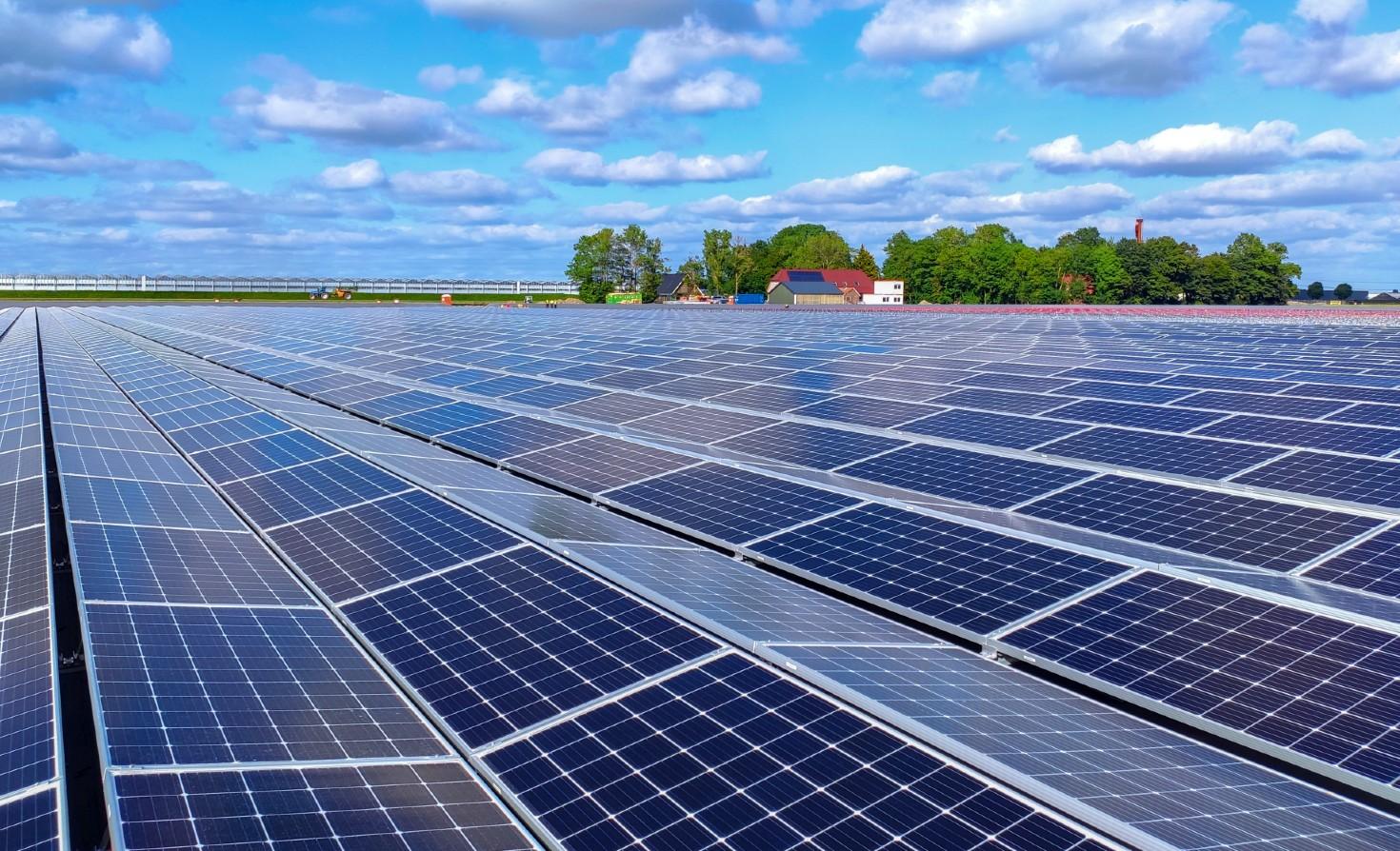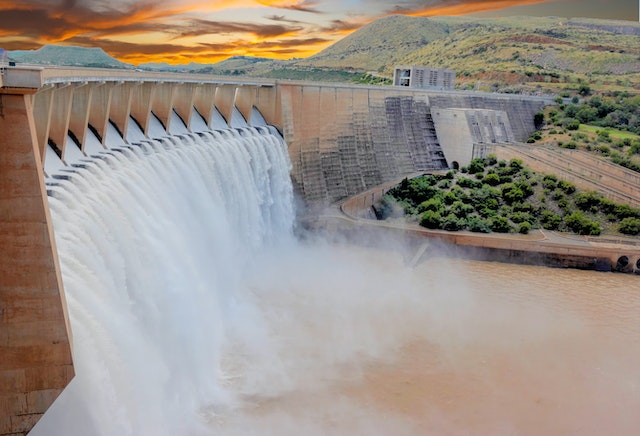
Renewable Power is the Future
Solar panels, wind turbines, and renewable energy sources will power a better future.

Renewable energy has become one of the biggest buzzwords of the 21st century, and for good reason. It offers a way for us to power our homes and businesses in a way that is sustainable, clean, and doesn’t contribute to climate change.
In a world grappling with environmental challenges and the need for sustainable solutions, renewable energy sources have emerged as potential game-changers. These sources, such as solar, wind, geothermal, hydro, tidal, and biomass energy, offer us the opportunity to power our lives without depleting limited resources or causing irreparable harm to the planet.
Wind Energy
Harnessing the power of the wind through wind turbines has rapidly gained popularity as a renewable energy source. Wind energy is inexhaustible and widely available, making it a compelling alternative to fossil fuels.
How it is generated
Wind energy is generated through the use of wind turbines, which convert the kinetic energy of the wind into electrical energy. These turbines consist of large blades that rotate when exposed to the wind, spinning a generator that produces electricity. The amount of energy generated depends on various factors, including wind speed, turbine size, and the efficiency of the system.
Advantages and Disadvantages
Wind energy offers numerous advantages as a renewable energy source.
- It is clean and does not produce any direct emissions or greenhouse gases, making it an environmentally friendly option.
- Wind power is abundant and widely available, with suitable wind conditions found in many regions around the world.
- It is also a domestic energy source, reducing dependence on imported fossil fuels.
- Another major advantage of wind energy is its potential for scalability. Wind farms can range from small-scale installations to large, utility-scale projects, allowing for flexible deployment based on energy demands.
However, there are some disadvantages associated with wind energy.
- One of the key challenges is the intermittency of wind, as it is dependent on natural wind patterns. This means that wind power is not consistently reliable and can fluctuate, requiring additional measures for grid stability and energy storage.
- Some people have concerns about the visual impact and noise pollution caused by large-scale wind farms. Proper planning and communication are crucial to address these issues and ensure the acceptance of wind energy projects.
- There are also people who have raised concerns about the impact on wildlife and the visual aesthetics of large-scale wind farms.
Global and Regional Wind Energy Trends
In recent years, wind energy has experienced significant growth globally. The adoption of wind power has been driven by increasing awareness of environmental issues and the need for cleaner energy sources. Many countries have implemented supportive policies and incentives to promote wind energy development, leading to a rapid expansion of wind farms worldwide.
Europe has been at the forefront of the wind energy revolution, with countries like Germany, Denmark, and Spain leading in installed capacity, and countries like Sweden leading in overall renewable percentage. These nations have invested heavily in wind power infrastructure and have seen remarkable growth in wind energy generation.
Asia, particularly China, has also made significant strides in wind power development. China has become the world’s largest producer of wind energy, surpassing other nations in terms of total installed capacity. The wind industry in China has achieved tremendous growth, driven by government initiatives and a strong commitment to renewable energy.
In the United States, wind energy has experienced steady growth and is now a substantial part of the country’s energy mix. Various states, such as Texas, Iowa, and California, have embraced wind power and have seen substantial investments in wind farms.
As technology continues to advance, the efficiency of wind turbines has improved, allowing for higher energy yields and cost reductions. The development of offshore wind farms has also gained momentum, offering a new frontier for wind energy expansion.
Solar Energy
Solar power is perhaps the most well-known and widely used renewable energy source. By converting sunlight into electricity through photovoltaic (PV) panels, solar energy provides a clean and sustainable way to power homes and businesses. Solar energy systems have become increasingly affordable and efficient over the years, making them an attractive option for many.

How it is Generated
Solar energy is generated through the use of photovoltaic (PV) panels, which convert sunlight into electricity. These panels consist of multiple solar cells made from semiconductors, typically silicon. When sunlight hits the solar cells, it excites the electrons, creating an electric current. The electricity generated by these solar cells can be used to power homes, businesses, and even entire cities.
Advantages of Solar Energy
Renewable and Sustainable: Solar energy relies on the power of the sun, which is an abundant and renewable resource. As long as the sun continues to shine, we can harness its energy to produce electricity.
Clean and Environmentally Friendly: Unlike fossil fuels, solar energy does not produce any harmful greenhouse gas emissions or air pollutants during its operation. This makes it a clean and environmentally friendly alternative to traditional forms of energy.
Reduces Electricity Bills: By installing solar panels, homeowners and businesses can significantly reduce their dependence on the grid and lower their electricity bills. In some cases, solar energy can even generate excess electricity that can be sold back to the grid, further offsetting costs.
Low Maintenance: Solar panels require minimal maintenance, with occasional cleaning and inspections to ensure optimal performance. Once installed, solar panels can last for decades, providing a reliable source of electricity.
Energy Independence: Solar energy allows individuals and communities to become more self-sufficient by generating their own electricity. This reduces reliance on external sources of energy and provides energy security even during power outages or disruptions.
Disadvantages of Solar Energy
Intermittent Availability: Solar energy is dependent on sunlight, meaning it is less productive during cloudy days or nighttime. This intermittency can be mitigated by installing battery storage systems to store excess energy generated during peak sunlight hours for use during periods of low or no sunlight.
High Initial Costs: While the cost of solar panels has decreased significantly over the years, the initial investment required for installation can still be quite high. However, this cost is often offset by long-term savings on electricity bills and potential government incentives or tax credits.
Land Requirement: Solar farms or large-scale installations require a significant amount of space, which can be a challenge in densely populated areas. However, solar panels can be installed on rooftops, utilizing existing space efficiently.
Global and Regional Solar Energy Trends
Solar energy has experienced rapid growth worldwide as countries strive to transition to cleaner and more sustainable energy sources. Europe has been at the forefront of solar energy adoption, with countries like Germany, Italy, and Spain leading in installed capacity. These nations have implemented supportive policies, such as feed-in tariffs and investment incentives, to promote solar energy development.
In recent years, Asia has witnessed significant growth in solar energy, driven by countries like China, India, and Japan. China has become the largest producer of solar energy globally, surpassing other nations in terms of total installed capacity. The Chinese government has provided extensive support and incentives to develop its solar industry, resulting in a remarkable expansion of solar farms and rooftop installations.
In the United States, solar energy has experienced steady growth, with various states adopting favorable policies and promoting solar power development. States like California, Texas, and Florida have seen substantial investments in solar infrastructure and have become leaders in solar energy generation.
As technology continues to advance, the efficiency of solar panels has improved, allowing for higher energy yields and cost reductions. The development of new materials, such as perovskite solar cells, holds great promise for further advancements in solar energy technology. Additionally, the integration of solar power with other renewable energy sources, like wind and storage technologies, is being explored to create more reliable and sustainable energy systems.
Geothermal Energy
Geothermal energy taps into the natural heat of the earth’s core, making it a reliable and sustainable form of renewable energy. By utilizing geothermal power plants, we can harness this heat and convert it into electricity, as well as utilize it for heating and cooling purposes.
How it is generated
Geothermal energy is a remarkable form of renewable energy that harnesses the natural heat generated by the Earth’s core. This heat is brought to the surface through volcanic activity, geothermal reservoirs, or hot springs. Geothermal power plants utilize this heat by drilling deep into the Earth and extracting steam or hot water from underground. The steam or hot water is then used to power turbines, which produce electricity. Geothermal energy can also be used for direct heating and cooling purposes by tapping into the natural heat reservoirs found beneath the Earth’s surface.

Advantages and disadvantages
Geothermal energy offers numerous advantages as a renewable energy source.
- It is a highly reliable and consistent energy source since the Earth’s heat is constantly replenished. Unlike solar or wind energy, geothermal energy is available 24/7, providing a stable and continuous power supply.
- Geothermal energy is clean and emits minimal greenhouse gases, contributing to a reduced carbon footprint. It also requires a relatively small land footprint compared to other energy sources, making it a viable option in areas with limited space availability.
However, geothermal energy also has some limitations.
- The initial costs of setting up geothermal power plants can be high, as they require specialized drilling and infrastructure.
- The location of viable geothermal resources is geographically restricted, making it less accessible in certain areas.
- There is a risk of encountering geological challenges during drilling, potentially affecting the overall feasibility and cost-effectiveness of geothermal projects.
Global and regional geothermal energy trends
Geothermal energy has experienced significant growth and development globally. Countries situated along the Pacific Ring of Fire, such as the United States, Mexico, Indonesia, and the Philippines, are known for their substantial geothermal resources and have become leaders in geothermal energy production. Additionally, regions with active volcanic activity, like Iceland and New Zealand, have successfully harnessed their geothermal potential.
In recent years, there has been an increased focus on expanding geothermal energy production worldwide. Countries like Kenya, Ethiopia, and Costa Rica are heavily investing in geothermal power projects, recognizing its potential as a reliable and sustainable energy source. Other regions, such as the Caribbean and parts of Central and South America, are also exploring their geothermal resources to diversify their energy mix.
Advancements in geothermal technology, such as enhanced geothermal systems (EGS), are being developed to tap into deeper and previously untapped geothermal reservoirs. EGS aims to overcome the limitations posed by specific geothermal hotspots, expanding the potential for geothermal energy extraction globally.
Hydropower
Hydropower, a form of renewable energy, has been utilized for centuries to generate electricity by harnessing the force of flowing or falling water. As one of the oldest and most reliable sources of renewable energy, hydropower plays a crucial role in meeting the world’s energy demands. In this section, we will delve into the process of hydropower generation, its advantages and disadvantages, as well as global and regional trends in the development of this sustainable energy source.
Generating Hydropower
Hydropower is generated through the construction of dams and reservoirs, which create large bodies of water known as hydroelectric power stations. The process involves the following steps:
- Dam Construction: A dam is built across a river to create a reservoir, which stores a large amount of water.
- Water Capture: When the dam is closed, water accumulates behind it, forming a reservoir.
- Water Release: The stored water is then released from the reservoir, flowing through channels and pipes.
- Turbines and Generators: The rushing water turns large turbines, connected to generators, producing electricity.
- Transmission: The generated electricity is transmitted through a dedicated power grid to homes, businesses, and industries.
Advantages of Hydropower:
Hydropower offers several advantages as a renewable energy source:

Clean and Sustainable: Hydropower produces zero greenhouse gas emissions, making it highly environmentally friendly. It helps reduce air pollution and combat climate change.
Reliable and Inexhaustible: Rivers and waterways have a constant flow, ensuring a consistent and reliable source of energy. Unlike fossil fuels, which are finite, water is an essentially unlimited resource.
Water Management: Hydropower facilities provide water management benefits by regulating water flows, preventing floods, and ensuring a reliable water supply for irrigation, industry, and drinking water.
Flexibility and Grid Stabilization: Hydropower plants can quickly adjust energy production to match fluctuations in demand, thereby stabilizing the grid and providing reliable electricity supply.
Disadvantages of Hydropower
While hydropower has numerous benefits, there are some disadvantages to consider:
Environmental Impact: The construction of large dams can cause habitat destruction, alter natural river ecosystems, and displace communities. It is essential to analyze and mitigate these impacts before implementing hydropower projects.
High Initial Costs: Building dams and hydropower facilities can involve significant initial investments. However, the long-term benefits of hydropower, including energy affordability, offset these costs.
Limited Suitable Locations: Harnessing the power of hydropower requires suitable geographical conditions with adequate water resources. Not all regions have the potential for large-scale hydropower projects.
Global and Regional Trends in Hydropower Development
Hydropower has experienced extensive development worldwide, with some regions leading in its adoption:
Global Outlook: Asia has seen remarkable growth in hydropower development, particularly in China, which accounts for the largest installed capacity globally. Other countries with significant hydropower capacity include the United States, Brazil, Canada, and Russia.
Regional Leaders: Countries such as Norway, Brazil, Canada, and Sweden have taken advantage of their abundant water resources and have become leaders in hydropower generation. These nations have also focused on developing sustainable hydroelectric facilities to minimize environmental impacts.
Small-Scale Hydropower: In addition to large-scale dams, there is a growing interest in small-scale hydropower projects, which can be implemented in rural areas or within existing water infrastructure. Small hydro plays a vital role in decentralized energy generation and electrification of remote regions.
Tidal Energy

Tidal energy, a promising form of renewable energy, utilizes the rise and fall of ocean tides to generate electricity. This chapter will explore the process of tidal energy generation, its advantages and disadvantages, as well as global and regional trends in its development.
How Tidal Energy is Generated
Tidal power plants employ large turbines strategically positioned in tidal streams or estuaries to capture the kinetic energy of moving water. As the tides change, the turbines are driven by the force of the water, spinning generators to produce electricity. The flow of water during both high and low tides ensures a consistent and predictable source of energy.
Advantages of Tidal Energy
Reliability: Tidal energy is highly predictable, as tidal patterns can be accurately forecasted years in advance. This reliability allows for efficient energy planning and grid management.
Sustainability: Tidal power generation produces zero greenhouse gas emissions and has minimal impact on air quality, contributing to a cleaner and healthier environment.
Predictability: Unlike solar or wind energy, which are intermittent, tides are constant and predictable, ensuring a constant and reliable source of power.
High Energy Density: Tidal streams have a high energy density and can generate significant amounts of power, making it a viable option for large-scale energy production.
Disadvantages of Tidal Energy:
Limited Suitable Locations: Tidal energy is location-dependent and requires regions with large tidal ranges or strong tidal currents. Therefore, suitable sites for tidal power plants are limited globally, constraining the widespread adoption of this technology.
High Initial Costs: Building and maintaining tidal power plants can involve substantial initial investments due to the complex infrastructure required.
Environmental Impact: The construction and operation of tidal energy facilities can have consequences for marine ecosystems, including changes to tidal patterns, disruption of habitats, and potential harm to marine organisms. It is crucial to conduct thorough environmental impact assessments and implement mitigation measures when developing tidal energy projects.
Global and Regional Trends in Tidal Energy Development
Europe’s Leadership: Europe has been at the forefront of tidal energy development, with countries like the United Kingdom, France, and the Netherlands leading in installed capacity. The European Union has set ambitious targets for renewable energy, driving significant investment in tidal power.
Canada’s Potential: Canada has substantial tidal energy resources, particularly in the Bay of Fundy, which experiences the highest tidal range in the world. The Canadian government has recognized the potential of tidal energy and is supporting its development through funding and research initiatives.
Asia’s Emerging Market: Countries like South Korea and China are investing in tidal energy research and development, recognizing the need for clean and reliable energy sources. These nations are exploring the potential of tidal currents along their coastlines and investing in pilot projects.
Innovations in Tidal Technology: Advancements in tidal turbine technology, such as horizontal-axis and vertical-axis turbines, are making tidal energy projects more efficient and cost-effective. Ongoing research and development aim to improve turbine designs, increase energy yields, and reduce maintenance costs.
Biomass Energy
Biomass energy is a renewable energy source that involves extracting energy from organic matter, such as plant materials, agricultural waste, and forest residues. This versatile energy source can be converted into heat, electricity, or biofuels, offering a sustainable and environmentally friendly alternative to fossil fuels. In this section, we will explore how biomass energy is generated, its advantages and disadvantages, as well as global and regional trends in its development.

How Biomass Energy is Generated
Biomass energy is generated through different processes, such as combustion, gasification, and fermentation. Here are some key methods of producing energy from biomass:
Combustion: In biomass combustion, organic matter is burned to produce heat, which can then be used for various purposes, including heating homes, generating steam for electricity production, or powering industrial processes.
Gasification: Biomass gasification involves converting organic matter into a synthetic gas, known as syngas, by heating it in an oxygen-limited environment. Syngas can then be used to produce electricity, heat, or biofuels.
Fermentation: Biomass can be used to produce biofuels through a process called fermentation. During fermentation, microorganisms break down organic matter, such as crop residues or food waste, to produce biofuels like ethanol or biogas.
Advantages and Disadvantages of Biomass Energy
Biomass energy offers several advantages as a renewable energy source. However, it also has some limitations. Let’s explore both sides of the spectrum:
Advantages:
Renewable and Sustainable: Biomass is derived from organic matter that can be replenished through proper land management and waste disposal practices.
Reduction of Waste: Biomass energy encourages the utilization of organic waste materials, such as agricultural residue and food scraps, reducing the amount of waste sent to landfills and contributing to waste management.
Carbon Neutrality: When properly managed, biomass energy can be carbon neutral or even carbon negative. This means that the carbon dioxide released during combustion is offset by the carbon absorbed by plants during growth.
Local Economic Development: Biomass energy promotes local job creation and economic development, as it requires a localized supply chain for the collection, processing, and distribution of biomass feedstock.
Disadvantages:
Environmental Impact: The production of biomass feedstock can have environmental consequences, such as deforestation or the use of water and fertilizers for crops. It is crucial to ensure sustainable sourcing and land use to minimize these impacts.
Limited Energy Density: Biomass energy has a lower energy density compared to fossil fuels, which means that larger quantities of biomass feedstock are required to produce the same amount of energy.
Competing Land Use: Biomass production for energy can compete with land use for food crops, raising ethical concerns about food security and potential price increases.
Air Pollutants: Combustion of biomass can produce air pollutants, such as particulate matter and nitrogen oxides. The use of advanced emission control technologies is necessary to mitigate these impacts.
Global and Regional Trends in Biomass Energy
Globally, there has been a growing recognition of the potential of biomass energy. Many countries are actively promoting the development and utilization of biomass resources to diversify their energy mix and reduce greenhouse gas emissions.

Technological advancements have made biomass energy conversion more efficient and cost-effective. Improved conversion technologies, such as biomass gasification, pyrolysis, and co-firing with coal, have increased the energy yield and reduced environmental impacts. This has further encouraged the adoption of biomass energy systems.
Regionally, the trends in biomass energy vary depending on available resources, policy frameworks, and energy demands. Let’s explore some key regional trends:
Europe: Europe has been at the forefront of biomass energy development. The European Union has set renewable energy targets, which have driven the growth of biomass energy across the region. Sustainable forest management and wood pellet production have become vital components of the European biomass industry.
North America: In North America, particularly in the United States and Canada, biomass energy has gained traction as a renewable energy source. Forest residues, agricultural waste, and dedicated energy crops are the primary feedstocks. Biomass power plants and combined heat and power systems are being deployed to provide electricity and heat to local communities.
Asia-Pacific: The Asia-Pacific region has abundant biomass resources, and several countries are tapping into this potential. China, India, and Japan are investing in biomass energy projects to address their growing energy demands while reducing reliance on fossil fuels. Agricultural residues, such as rice husks and sugarcane bagasse, are commonly used as biomass feedstocks in this region.
Latin America: Latin American countries, including Brazil and Colombia, have a significant focus on bioenergy derived from sugarcane and palm oil residues. These countries have extensive agricultural sectors, and biomass energy has the potential to create rural employment opportunities while reducing dependence on traditional energy sources.
Sustainability
Sustainability is another topic related to renewable energy. It’s all about reducing the energy you consume in order to require less fossil fuels and to waste less energy. You can add insulation to your home, use energy-efficient lighting, or even use more efficient programming languages.
Renewable energy is not just about saving the planet. It’s also about saving money. By investing in renewable energy, we can reduce our energy bills and create jobs in the clean energy sector. So whether you’re a homeowner, a business owner, or a policy maker, investing in renewable energy is a smart choice that will benefit us all in the long run.
